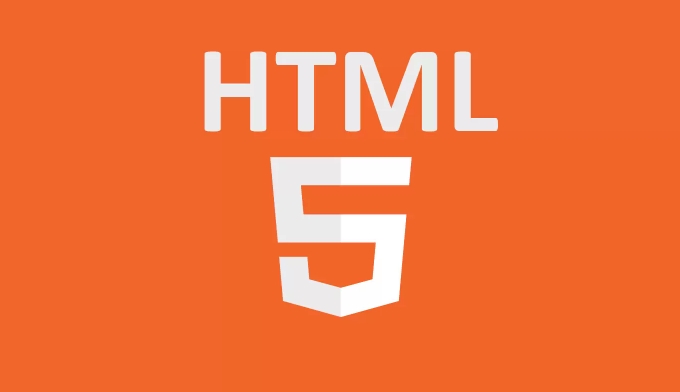The sandbox attribute of an iframe is a mechanism in HTML5 used to enhance the security of embedded content, and by default restricts behavior within an iframe. It sets parameters such as allow-scripts, allow-forms, etc. to release permissions as needed to prevent malicious code from affecting the main page. It is recommended to always enable sandbox, minimize permission opening, combine CSP, test compatibility, and be suitable for embedded advertising, user content, code preview and other scenarios.

If you embed third-party content into your web page, especially through iframes, you will definitely want to control the behavior of this part of the content as much as possible to prevent it from adversely affecting your home page. HTML5 provides some security properties, where sandbox is specifically used to enhance iframe security.

What is the sandbox property of an iframe?
sandbox is an attribute provided in HTML5 for <iframe></iframe> tags to impose additional security restrictions on embedded pages. By default, as long as this property is set, the browser will treat the iframe as a "sandboxed" environment. Even if the specific value is not specified, the content in the iframe will be subject to a series of strict restrictions.

These limitations include, but are not limited to:
- Cannot submit a form
- No new window or navigation to top pages can be displayed
- Cannot execute scripts
- Cannot access the DOM or cookie of the parent page
Simply put, it is like adding a transparent protective cover to the iframe.

How to use the sandbox attribute?
You can write a basic iframe like this and enable sandbox:
<iframe src="https://example.com" sandbox></iframe>
But usually you will want to selectively release some permissions based on your needs. For example, if you want to allow scripts to run and form submissions, you can write this:
<iframe src="https://example.com" sandbox="allow-scripts allow-forms"></iframe>
Common optional values ??include:
-
allow-same-origin: Allows the same origin as the parent page -
allow-top-navigation: allows iframes to control the entire page jump -
allow-scripts: allows script execution -
allow-forms: Allow submission of forms -
allow-popups: Allow popups -
allow-modals: allows display of modal dialogs (such as alert) -
allow-orientation-lock: Allows lock screen orientation -
allow-pointer-lock: Allow pointer lock (commonly used in games) -
allow-presentation: Allow to enter presentation mode -
allow-storage-access-by-user-activation: allows access to storage (such as cookies) after user interaction
You don't need to turn it on, just open it as needed.
Suggestions in practical applications
-
Always enable sandbox
- Even if the content you don't trust is just a static resource, it is recommended to add
sandboxeven if you don't set any value. This can help you avoid many potential problems.
- Even if the content you don't trust is just a static resource, it is recommended to add
-
Delegate permissions as little as possible
- For example, if you only need to display a static advertising image, there is no need to open
allow-scripts. - If you do need scripts, but only partial functions, consider whether you really want to allow it to access the entire page or initiate a jump.
- For example, if you only need to display a static advertising image, there is no need to open
-
Pay attention to using it with CSP
- Content Security Policy (CSP) is another important front-end security mechanism. Used in conjunction with sandbox, a more comprehensive line of security can be built.
-
Test behavior under different configurations
- Support for some sandbox features varies slightly in different browsers, especially in older versions. It is best to do compatibility tests before going online.
Which scenarios are suitable for sandbox?
- When embedding third-party ads, gadgets, or plug-ins
- Show user submissions in a forum or CMS
- Create a preview window for online code editor
- Develop a multi-tenant platform to isolate resources from different customers
This kind of scenario involves uncontrollable external content. At this time, sandbox is like a firewall to prevent malicious code from "crossing the boundaries".
Basically that's it. Rational use of sandbox can effectively improve the security of iframes. Although it seems to be a small detail, it is very important in modern web development.
The above is the detailed content of HTML5 security attributes like sandbox for iframes. For more information, please follow other related articles on the PHP Chinese website!

Hot AI Tools

Undress AI Tool
Undress images for free

Undresser.AI Undress
AI-powered app for creating realistic nude photos

AI Clothes Remover
Online AI tool for removing clothes from photos.

Clothoff.io
AI clothes remover

Video Face Swap
Swap faces in any video effortlessly with our completely free AI face swap tool!

Hot Article

Hot Tools

Notepad++7.3.1
Easy-to-use and free code editor

SublimeText3 Chinese version
Chinese version, very easy to use

Zend Studio 13.0.1
Powerful PHP integrated development environment

Dreamweaver CS6
Visual web development tools

SublimeText3 Mac version
God-level code editing software (SublimeText3)

Hot Topics
 Audio and Video: HTML5 VS Youtube Embedding
Jun 19, 2025 am 12:51 AM
Audio and Video: HTML5 VS Youtube Embedding
Jun 19, 2025 am 12:51 AM
HTML5isbetterforcontrolandcustomization,whileYouTubeisbetterforeaseandperformance.1)HTML5allowsfortailoreduserexperiencesbutrequiresmanagingcodecsandcompatibility.2)YouTubeofferssimpleembeddingwithoptimizedperformancebutlimitscontroloverappearanceand
 Adding drag and drop functionality using the HTML5 Drag and Drop API.
Jul 05, 2025 am 02:43 AM
Adding drag and drop functionality using the HTML5 Drag and Drop API.
Jul 05, 2025 am 02:43 AM
The way to add drag and drop functionality to a web page is to use HTML5's DragandDrop API, which is natively supported without additional libraries. The specific steps are as follows: 1. Set the element draggable="true" to enable drag; 2. Listen to dragstart, dragover, drop and dragend events; 3. Set data in dragstart, block default behavior in dragover, and handle logic in drop. In addition, element movement can be achieved through appendChild and file upload can be achieved through e.dataTransfer.files. Note: preventDefault must be called
 Audio and Video: can i record it?
Jun 14, 2025 am 12:15 AM
Audio and Video: can i record it?
Jun 14, 2025 am 12:15 AM
Yes,youcanrecordaudioandvideo.Here'show:1)Foraudio,useasoundcheckscripttofindthequietestspotandtestlevels.2)Forvideo,useOpenCVtomonitorbrightnessandadjustlighting.3)Torecordbothsimultaneously,usethreadinginPythonforsynchronization,oroptforuser-friend
 What is the purpose of the input type='range'?
Jun 23, 2025 am 12:17 AM
What is the purpose of the input type='range'?
Jun 23, 2025 am 12:17 AM
inputtype="range" is used to create a slider control, allowing the user to select a value from a predefined range. 1. It is mainly suitable for scenes where values ??need to be selected intuitively, such as adjusting volume, brightness or scoring systems; 2. The basic structure includes min, max and step attributes, which set the minimum value, maximum value and step size respectively; 3. This value can be obtained and used in real time through JavaScript to improve the interactive experience; 4. It is recommended to display the current value and pay attention to accessibility and browser compatibility issues when using it.
 How can you animate an SVG with CSS?
Jun 30, 2025 am 02:06 AM
How can you animate an SVG with CSS?
Jun 30, 2025 am 02:06 AM
AnimatingSVGwithCSSispossibleusingkeyframesforbasicanimationsandtransitionsforinteractiveeffects.1.Use@keyframestodefineanimationstagesforpropertieslikescale,opacity,andcolor.2.ApplytheanimationtoSVGelementssuchas,,orviaCSSclasses.3.Forhoverorstate-b
 HTML audio and video: Examples
Jun 19, 2025 am 12:54 AM
HTML audio and video: Examples
Jun 19, 2025 am 12:54 AM
Audio and video elements in HTML can improve the dynamics and user experience of web pages. 1. Embed audio files using elements and realize automatic and loop playback of background music through autoplay and loop properties. 2. Use elements to embed video files, set width and height and controls properties, and provide multiple formats to ensure browser compatibility.
 What is WebRTC and what are its main use cases?
Jun 24, 2025 am 12:47 AM
What is WebRTC and what are its main use cases?
Jun 24, 2025 am 12:47 AM
WebRTC is a free, open source technology that supports real-time communication between browsers and devices. It realizes audio and video capture, encoding and point-to-point transmission through built-in API, without plug-ins. Its working principle includes: 1. The browser captures audio and video input; 2. The data is encoded and transmitted directly to another browser through a security protocol; 3. The signaling server assists in the initial connection but does not participate in media transmission; 4. The connection is established to achieve low-latency direct communication. The main application scenarios are: 1. Video conferencing (such as GoogleMeet, Jitsi); 2. Customer service voice/video chat; 3. Online games and collaborative applications; 4. IoT and real-time monitoring. Its advantages are cross-platform compatibility, no download required, default encryption and low latency, suitable for point-to-point communication
 How to create animations on a canvas using requestAnimationFrame()?
Jun 22, 2025 am 12:52 AM
How to create animations on a canvas using requestAnimationFrame()?
Jun 22, 2025 am 12:52 AM
The key to using requestAnimationFrame() to achieve smooth animation on HTMLCanvas is to understand its operating mechanism and cooperate with Canvas' drawing process. 1. requestAnimationFrame() is an API designed for animation by the browser. It can be synchronized with the screen refresh rate, avoid lag or tear, and is more efficient than setTimeout or setInterval; 2. The animation infrastructure includes preparing canvas elements, obtaining context, and defining the main loop function animate(), where the canvas is cleared and the next frame is requested for continuous redrawing; 3. To achieve dynamic effects, state variables, such as the coordinates of small balls, are updated in each frame, thereby forming






